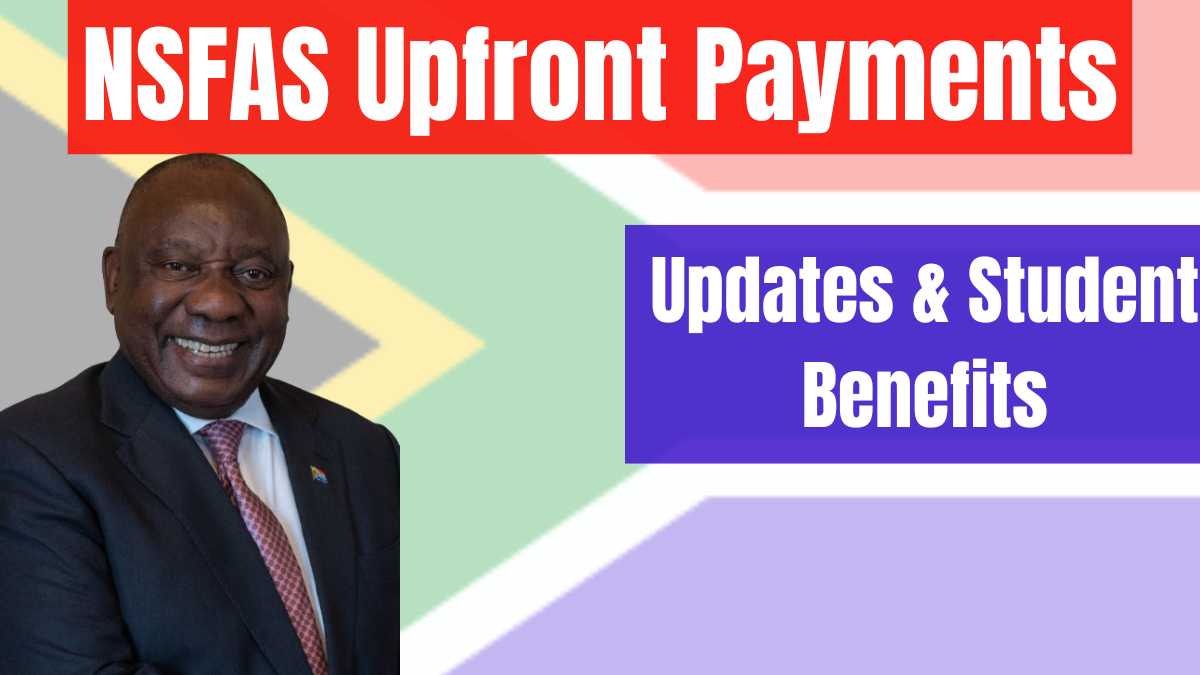As the 2025 academic year begins, South African universities are preparing to accommodate a growing number of students. The National Student Financial Aid Scheme (NSFAS) plays a crucial role in ensuring that eligible students receive timely financial support to cover tuition, accommodation, and living expenses.
To prevent delays and ensure a smooth registration process, NSFAS has confirmed upfront payments to universities and colleges, reinforcing the government’s commitment to accessible education.

Why Are Upfront Payments Important?
Many students rely on NSFAS funding for their education, but past delays in payments have disrupted registration processes. To address these challenges, NSFAS disbursed upfront payments on January 10, 2025, ensuring institutions have the necessary funds to support students before the academic year begins.
Breakdown of NSFAS Upfront Payments for 2025:
| Category | Allocation Details |
|---|---|
| Student Allowances | One month’s funds for personal care, travel, books, and living expenses |
| Book Allowance | 50% of the total book allowance for the year |
| University Funding | 9.5% of the total R39 billion allocation for 2025 |
| College Tuition Payments | Funds sent directly to TVET colleges |
With these payments, universities and colleges can register students without delays, ensuring a seamless academic transition for new and returning learners.
Challenges in Higher Education: Capacity & Demand
Despite record-breaking matric results in 2024, South African universities continue to face serious space constraints.
- 2024 Matric Pass Rate: 87.3% – One of the highest in history.
- Bachelor’s Pass Rate: 337,158 students qualified for degree programs.
- Available University Seats: Only 202,000 first-year spots are available.
University Capacity Shortfall Over the Years:
| Year | Bachelor Passes | University Capacity | Shortfall |
|---|---|---|---|
| 2024 | 337,158 | 202,000 | 135,158 |
| 2023 | 324,226 | 200,000 | 124,226 |
| 2022 | 312,000 | 198,000 | 114,000 |
The growing demand for higher education has led to increased pressure on government funding, university infrastructure, and student accommodation availability.
How NSFAS Is Improving the Application Process
NSFAS has also streamlined application processing to ensure that funding decisions are finalized before the academic year starts.
2025 NSFAS Application Updates:
| Application Type | Status |
|---|---|
| SASSA Beneficiaries | 658,943 applications received – 606,113 students provisionally funded |
| Non-SASSA Applicants | 276,072 applications under review – 201,848 verified |
| Student Loan Applications | 17,370 applications pending financial eligibility checks |
Students awaiting final approval are advised to check their NSFAS portal regularly for updates.
Government’s Focus on TVET Colleges as an Alternative Pathway
With limited university seats available, the Department of Higher Education and Training (DHET) is encouraging students to explore Technical and Vocational Education and Training (TVET) colleges as a viable alternative.
Benefits of Choosing TVET Colleges:
- Job-Ready Skills – Focused on practical training for immediate employment.
- Entrepreneurial Opportunities – Equips students with skills to start businesses.
- Industry Alignment – Courses tailored to market demands.
- Improved Infrastructure – Government investments in better learning facilities.
- Accredited Programs – Recognized qualifications by the Quality Council for Trades and Qualifications (QCTQ).
TVET institutions are also strengthening partnerships with industries and funding organizations, ensuring students gain hands-on experience before entering the workforce.
How NSFAS Is Addressing Student Accommodation & Transport Issues
To enhance student welfare, the Minister of Higher Education, Dr. Nobuhle Nkabane, has formed a task team to resolve accommodation and transport challenges.
This task team includes:
- NSFAS representatives
- Higher education officials
- Accommodation providers
- Transport service operators
The goal is to ensure that students have access to affordable, safe housing and reliable transport options, reducing barriers to education.
Frequently Asked Questions (FAQs)
Who qualifies for NSFAS funding in 2025?
Students from low-income households with an annual income below R350,000 are eligible. SASSA beneficiaries automatically qualify.
When will students receive their NSFAS allowances?
The first allowances were paid upfront in January 2025. Further payments will follow once students complete registration.
What happens if my NSFAS application is still pending?
Students can track their application status via the NSFAS online portal. Pending applications are still under review, and updates will be provided soon.
Can I receive NSFAS funding if I study at a TVET college?
Yes, NSFAS also funds students at TVET colleges, covering tuition, accommodation, and travel costs.
What should I do if my NSFAS payment is delayed?
Students should contact their university’s financial aid office or NSFAS directly to report any delays.
Will there be additional funding for students who need extra financial assistance?
NSFAS operates within a fixed budget, but students facing financial distress can explore alternative bursaries and scholarships.
Are NSFAS payments made directly to students?
For university students, allowances are paid directly. For TVET college students, tuition payments go directly to the institution, while allowances are sent to students.
Conclusion
The NSFAS 2025 upfront payments represent a positive step in ensuring students can register on time without financial obstacles. With a record number of matriculants qualifying for higher education, the South African government is committed to making education accessible to all deserving students.
For those unable to secure university admission, TVET colleges offer alternative career pathways with job-focused programs and industry partnerships. As funding and infrastructure improve, collaboration among stakeholders remains key to strengthening the education system.
Click here to know more.
Aanchal is a passionate writer with a keen interest in storytelling, content creation, and creative expression. She enjoys exploring diverse topics and crafting engaging narratives that captivate readers.
